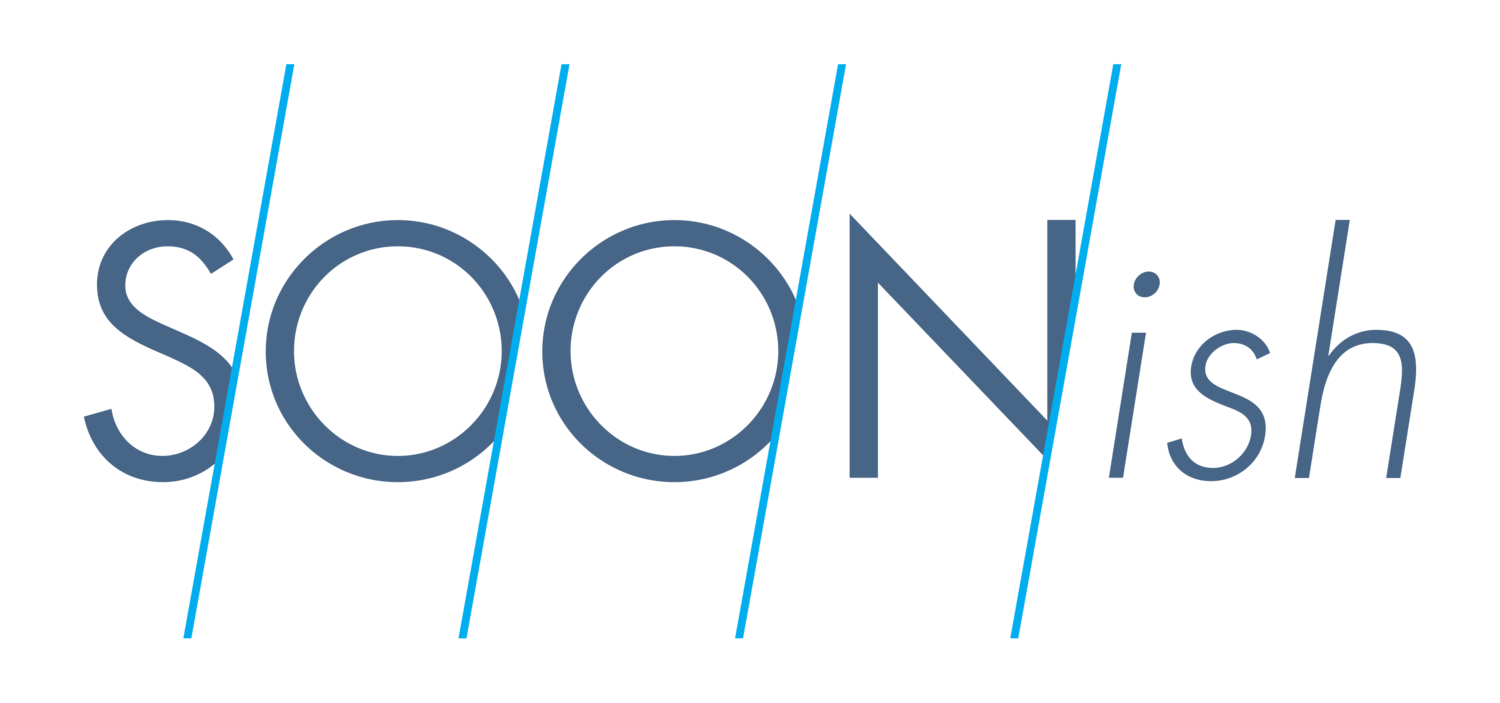1.01 | 01.11.17
The inaugural episode of Soonish is about one of the boldest visions of the future ever put down on film: Stanley Kubrick’s 2001: A Space Odyssey.
The movie came out in 1968, and it offered an incredibly detailed and inspiring forecast for life the early 21st century. It showed a giant rotating space station and a whole city on the moon. It featured astronauts traveling to Jupiter, and one of the main characters was a thinking computer named HAL.
By putting the year in the title, Kubrick tied this forecast to a very specific date. But by the time the actual year 2001 rolled around, very few of his predictions had come true.
How did that happen? Kubrick was famous for his obsessive realism. His collaborator on the script was the science fiction giant Arthur C. Clarke, who introduced the idea of the geostationary satellite nearly 20 years before aerospace engineers built the real thing. So these were two very smart guys—and nobody has ever tried harder to make the future look real on film. But as a piece of forecasting, the movie was way off target.
This episode asks how the future we actually got turned out to be so different from the future portrayed in the movie—and what that means for our future.
Soonish is not a show about science fiction. It’s about how the choices we're making about real technologies today could help us or hurt us tomorrow.
But I wanted to make 2001 the centerpiece of the pilot episode because I think there’s a lot of meaning embedded in our portrayals of the future, whether they take the form of movies, books, world’s fairs, theme parks, advertising, comics, or cartoons.
That's a theme I've been mulling for almost 30 years, ever since I wrote my college honors thesis about the 1939 and 1964 New York World's Fairs and EPCOT Center.
What I've learned is that depictions of the future are mostly about what we’re hoping for and what we’re worrying about now, in the present—and, just as important, what we believe is possible.
Join our list for regular news and updates about Soonish, including episode reminders, cool features, and links to bonus content.
See Also
The Full Soonish Interview with Jamais Cascio
The Full Soonish Interview with Jason Pontin
2001 came and went but the movie's ideas still resonate, a July 2017 adaptation of this episode for WHYY's The Pulse
Guests and Interviewees
Jason Pontin, CEO, editor-in-chief, and publisher, MIT Technology Review
Curtis Wong, principal researcher, Microsoft Research
Jamais Cascio, foresight thinker; distinguished fellow, Institute for the Future
Piers Bizony, science journalist and author
Lawrence Lee, senior director of strategy, Palo Alto Research Center
Resources
2001: A Space Odyssey by Arthur C. Clarke, Penguin Group, reissued 2000
The Making of Stanley Kubrick’s 2001: A Space Odyssey by Piers Bizony, Taschen, 2015
OpenTheFuture.com, the website of Jamais Cascio
Can Technology Solve Our Big Problems?, a 2013 TED talk by Jason Pontin
Why We Can’t Solve Big Problems, a companion article by Jason Pontin in MIT Technology Review, 2012
Solve, MIT's community convening "extraordinary people" to "examine and address challenges where where technology, business innovation, and smart policy can be combined to bring about real and lasting solutions"
The Rise and Fall of American Growth: The U.S. Standard of Living Since the Civil War, Robert Gordon, Princeton University Press, 2016
Playlist
Soonish theme by Graham Gordon Ramsay
Also Sprach Zarathustra by Richard Strauss, from 2001: A Space Odyssey soundtrack album, MGM Records, 1968
Somnolence from the album ICD-10 by Kai Engel
The Blue Danube by Johann Strauss, from 2001: A Space Odyssey soundtrack album, MGM Records, 1968
Gayane Ballet Suite (Adagio) by Aram Khachaturian from 2001: A Space Odyssey soundtrack album, MGM Records, 1968
Snowmen from the album Chapter One/Cold by Kai Engel
There's a Great Big Beautiful Tomorrow, Richard and Robert Sherman, 1964
Ragtime Dance by Scott Joplin, 1902 (from archive.org piano rolls)
Subdivision of the Masses from the album Sound-trax by Philipp Weigl
Brooks from the album Chapter Two/Mild by Kai Engel
Special Thanks
Thank you to everyone who helped to get Soonish launched, including Graham Gordon Ramsay, Ibby Caputo, Cynthia Graber, Mitch Hanley, John Barth, Celia Ramsay, Kent Rasmussen, Ellen Leanse, Luke Timmerman, Tracy Cutchlow, Wing Ngan of Ink Design, Jessica Abel, my family in Alaska and Michigan, and the folks at the PRX Podcast Garage and the Sonic Soiree.
A Note on Pronunciation
I generated the text-to-speech voice in this episode using Amazon Polly. Because I was employing the voice to quote from a book by a British author, Piers Bizony, I selected the UK English voice that Amazon calls Brian.
You'll notice in the episode that Brian uses the British pronunciation of the word "prescient" -- which, phonetically, gets extended to three syllables and is something like PRESS-see-ent. In my narration I revert to the two-syllable US pronunciation, which is PRESH-ent.
I've been corrected for using either pronunciation. But I'm here to tell you that both are correct—just on different sides of the pond. I've also heard people split the difference and say "PRESH-ee-ent," which I can live with.
Our Sponsor
Support for the first two seasons of Soonish came from Kent Rasmussen Winery. Since 1986, Rasmussen has been famous for their purely poetic Pinot Noir, grown in the cool mists of the Carneros region of Napa Valley. And under the companion Ramsay label they offer superior-quality North Coast Pinot Noir, Merlot, Petite Sirah, Cabernet Sauvignon, and Chardonnay at a wonderful price. Ask for Rasmussen and Ramsay wines at fine restaurants and stores in 29 states. For more information, visit kentrasmussenwinery.co




